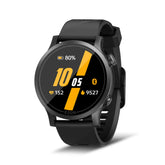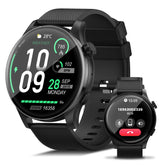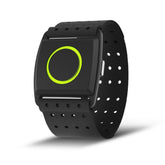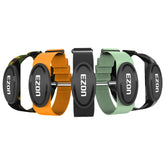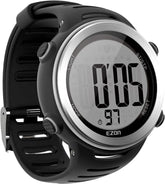Beginner's Half Marathon Training Guide: 12-Week Plan
Embarking on a half marathon journey doesn't have to be daunting. With this half marathon training guide, you'll find everything you need to prepare for your first 13.1-mile race.
Setting Up Your Half Marathon Training Goals
Before diving into any couch to half marathon training plan, it’s essential to set clear goals. Understanding what you want to achieve will keep you motivated throughout the process.
Why Set Goals?
Goal-setting is crucial as it provides direction and purpose to your training. Whether it’s finishing the race or achieving a specific time, having objectives keeps you focused.
SMART Goals Framework
Use the SMART framework to create effective goals: Specific, Measurable, Achievable, Relevant, and Time-bound. For instance, aim to complete the half marathon within three hours if that aligns with your current fitness level.
Remember, progress takes time. Start small and gradually increase your targets.
Building a Strong Foundation in Weeks 1-4
The initial phase focuses on establishing a solid base. This involves consistent running sessions and cross-training activities to boost overall endurance.
Run-Walk Method
Incorporate the run-walk method during these weeks. Alternate between running and walking intervals to prevent fatigue while building stamina.
Cross-Training Benefits
Engage in cross-training exercises like cycling, swimming, or yoga twice a week. These activities complement running by enhancing flexibility and reducing injury risk.
- Swimming improves cardiovascular health.
- Cycling strengthens leg muscles without high impact.
- Yoga aids recovery and boosts mental clarity.
Progressing Through Weeks 5-8
As you enter the middle phase of your half marathon training guide, it’s time to ramp up the intensity. Longer runs and faster paces become part of your routine.
Increasing Mileage Gradually
Each week, extend your long runs by one mile until reaching eight miles by Week 8. This gradual progression prepares your body for longer distances.
Introducing Speed Workouts
Add speed workouts once a week to improve pace efficiency. Examples include interval runs and tempo sessions. Focus on maintaining form even at higher speeds.
Preparing for Race Day in Weeks 9-12
The final stretch of your half marathon training guide emphasizes specificity and tapering. Simulate race conditions and allow your body to recover fully.
Race-Specific Training
Practice running at your target race pace during key workouts. Incorporate hills if the race course includes elevation changes. Visualize success to build confidence.
Tapering Process
Reduce mileage significantly in the last two weeks to ensure peak performance on race day. Rest is just as important as training during this period.
Maintaining Motivation Throughout Training
Staying motivated can be challenging, but with the right strategies, you’ll remain committed to your half marathon training guide.
Create a Support System
Join a local running group or connect with fellow runners online. Sharing experiences and celebrating milestones together boosts morale.
Track Progress Regularly
Keep a journal or use an app to monitor improvements in distance, speed, and recovery. Seeing tangible results reinforces dedication.
Conclusion: Celebrating Your Journey
Completing a half marathon is a significant accomplishment. Following this beginner's half marathon training guide ensures you’re well-prepared for race day. Remember, consistency and patience are key.
Enjoy every step of the process and embrace challenges along the way. Once you cross that finish line, you’ll realize how far you’ve come since starting your couch to half marathon training plan.
Continue setting new goals after the race to maintain momentum and explore further opportunities in running.
Frequently Asked Questions (FAQ)
Here are answers to common questions about half marathon training:
How Long Should I Train Before a Half Marathon?
A typical beginner program spans 12 weeks. However, if you're starting from scratch, consider extending it to 16-20 weeks for better preparation.
What Gear Do I Need?
Invest in quality running shoes suited to your foot type and comfortable clothing designed for athletic activity. Optional items include GPS watches and hydration belts.
Can I Walk During the Race?
Yes! Many beginners use a combination of running and walking to manage energy levels effectively. There’s no shame in taking breaks when needed.
